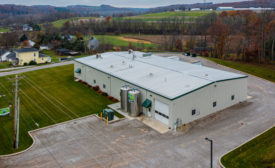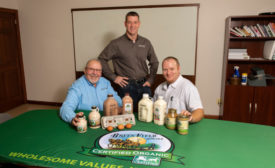Anna Boisseau
Anna Boisseau, managing editor of Dairy Foods, has a diverse background in journalism including experience writing about international relations and parenting issues. In her spare time, she works on documentaries. She received her master’s degree from Northwestern University’s Medill School of Journalism.
ARTICLES
Today’s consumers have returned to some pre-pandemic eating habits such as convenience — and also are embracing new ones they’re finding on TikTok and other social media platforms.
Read More
Add a natural hue to dairy products
As processors gravitate toward natural colors, they should keep in mind certain pitfalls of using these clean-label ingredients.
March 7, 2022
Ice cream category attempts a balancing act
Ice cream processors should pay attention to conflicting consumer needs — from nostalgia and indulgence to wellness — to maintain growth momentum.
February 25, 2022
Inclusions are more than extras in dairy
Dairy processors can use these ingredients to impart health benefits, jazz up flavor and create exciting textures.
February 8, 2022
Dining out with dairy
As consumers return to restaurants and other foodservice establishments, many are opting for dairy-filled dishes as comforting indulgences.
February 1, 2022
Green Field Farms preserves milk’s original form
The cooperative uses low-temperature vat pasteurization to keep the natural enzymes found in raw milk.
January 4, 2022
Amish-run Green Field Farms combines old world methods with innovation
The cooperative might use ancient farming methods, but its product development efforts focus on meeting the needs of the contemporary consumer.
December 20, 2021
Probiotics, prebiotics are natural partners for dairy
These ingredients can attract today’s health-concerned shoppers.
December 6, 2021
2021 State of the Industry: Cultured dairy is at a fork in the road
Despite attempts to avoid potholes, most cultured dairy categories find themselves in another year of dead ends.
November 8, 2021
2021 State of the Industry: Milk is on a long and winding road
Milk is yet again pumping the brakes after a pandemic-related boost; however, flavored milk is still taking the expressway.
November 5, 2021
Get our new eMagazine delivered to your inbox every month.
Stay in the know on the latest dairy industry trends.
SUBSCRIBE TODAYCopyright ©2024. All Rights Reserved BNP Media.
Design, CMS, Hosting & Web Development :: ePublishing








.jpg?height=168&t=1639062115&width=275)

